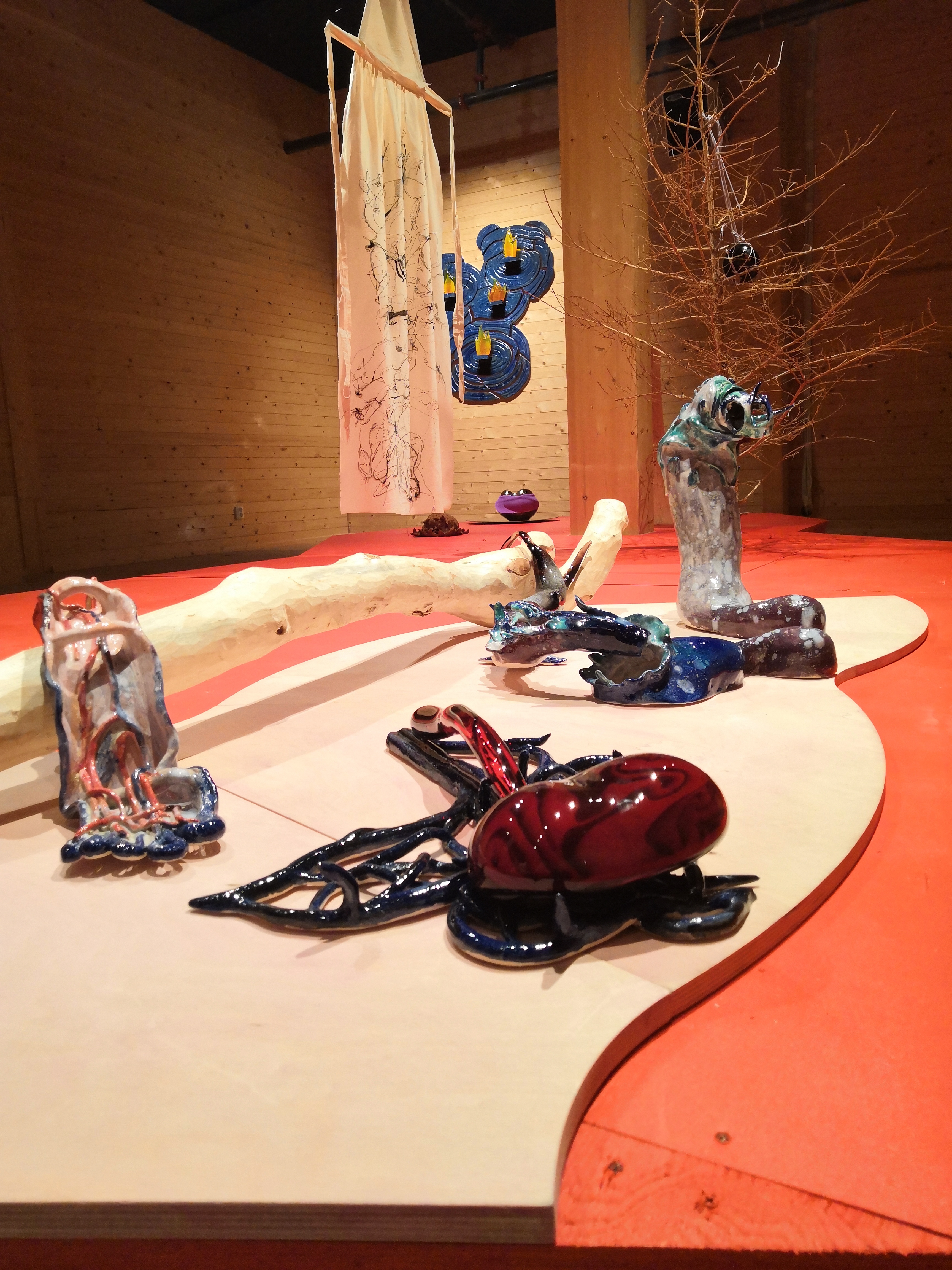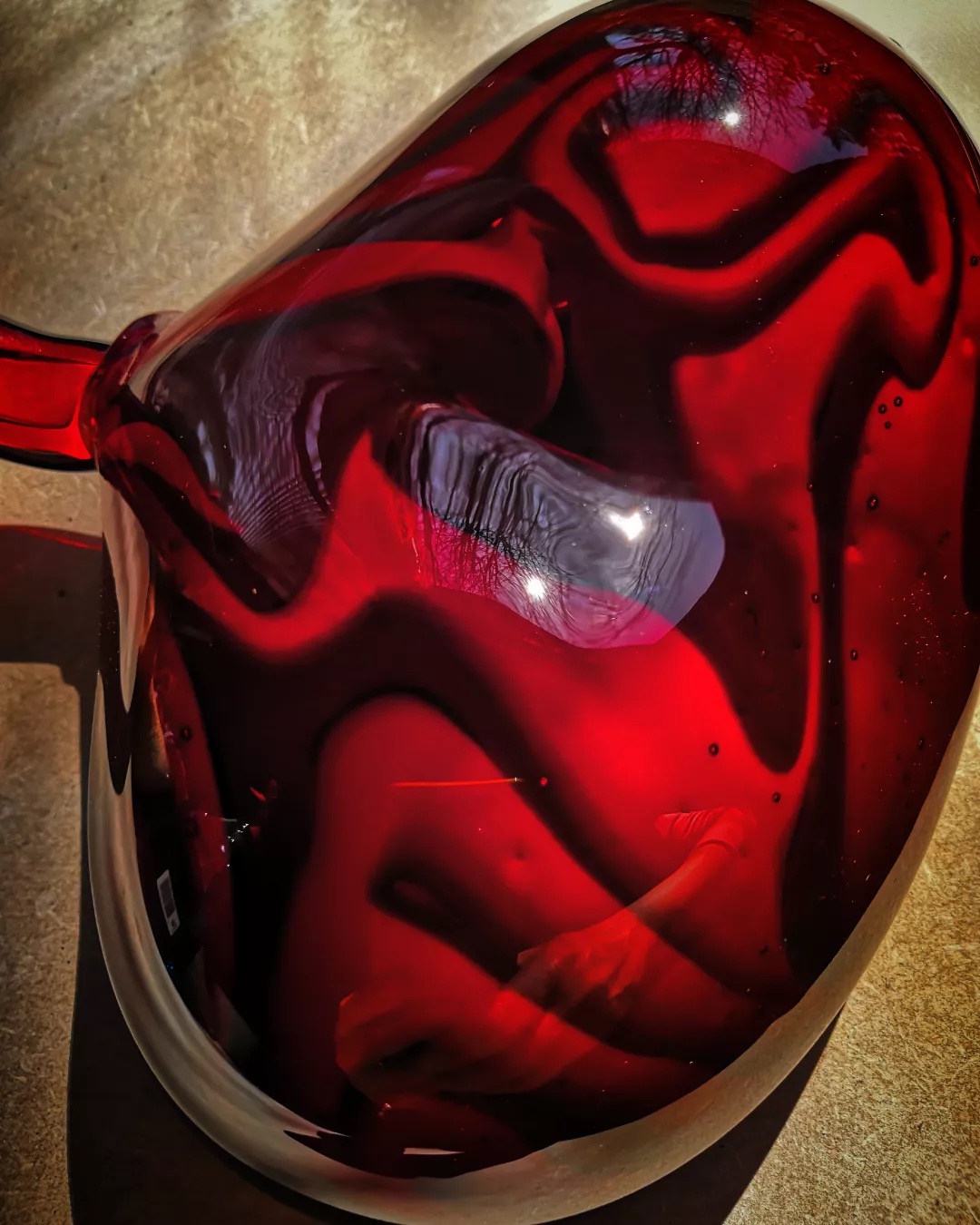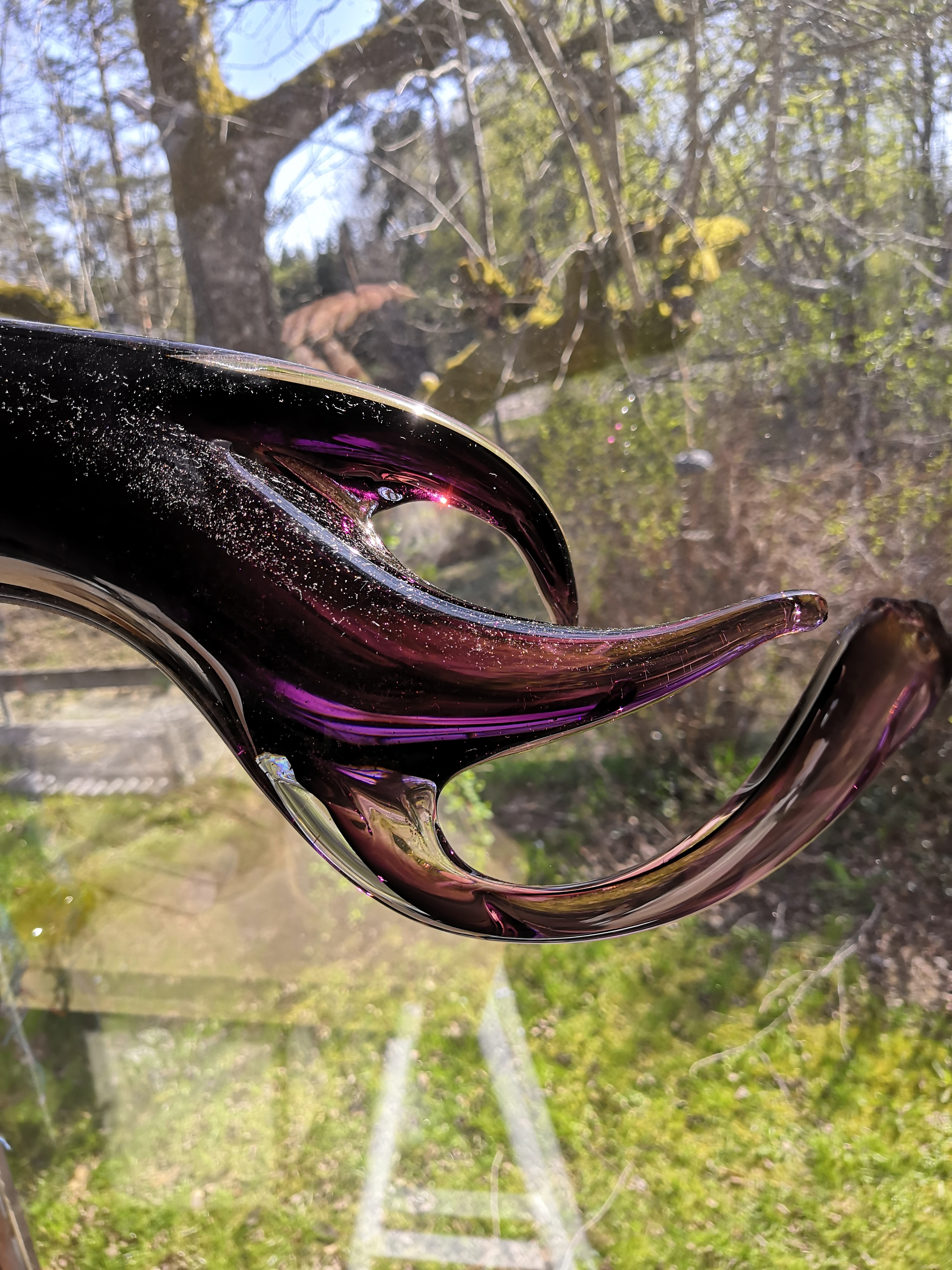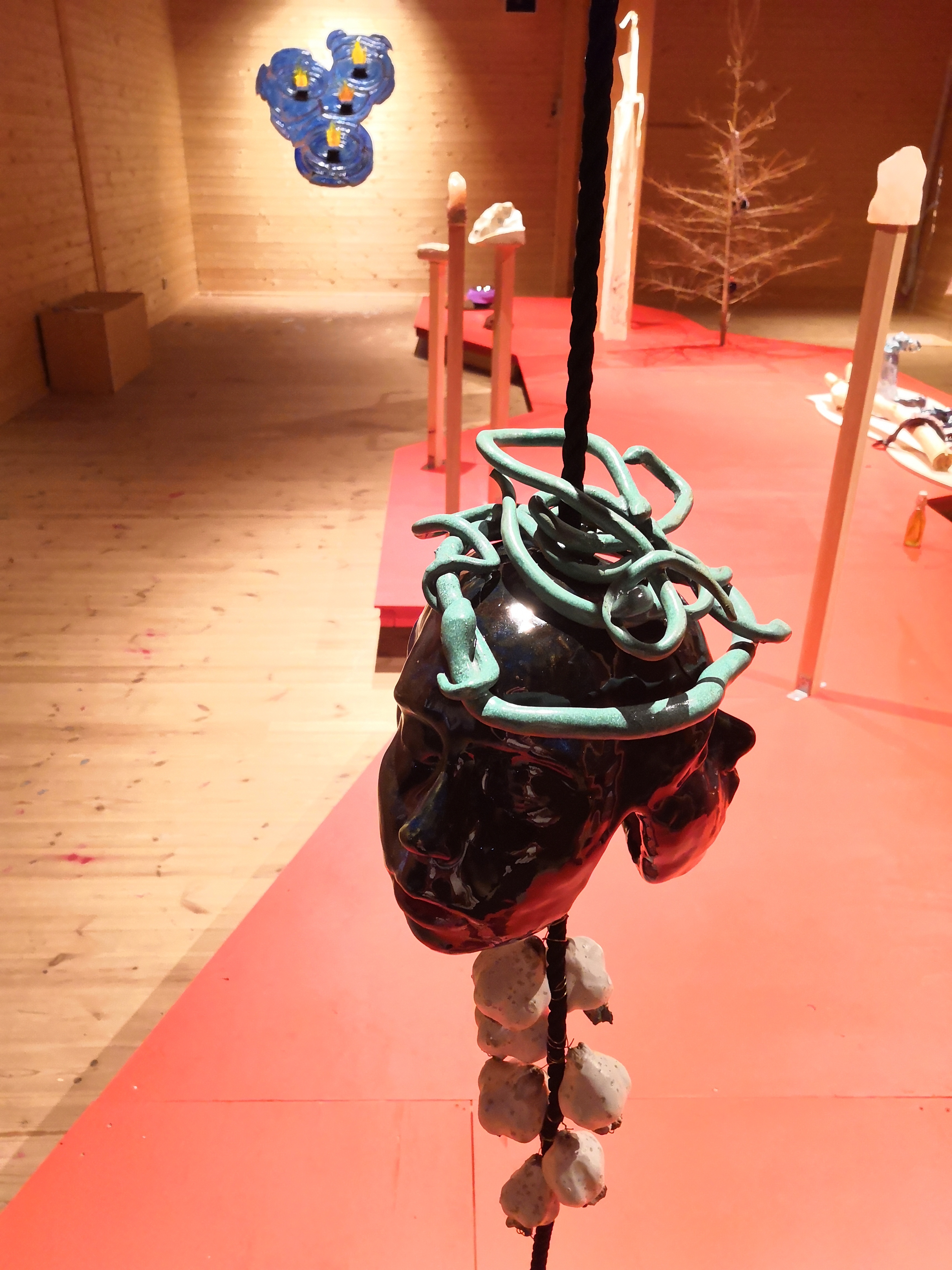Becoming Tree (Daphne) 2023
Hekate (2022)
Material: Keramiska objekt och handblåst glas med skalad tallgren placerat på plywood laserade i rosa och en torr gran från Mia's stuga.
Ceramics, handblown glass, peeled pine and an old spruce placed on plywood tinted in pink.
Ceramics, handblown glass, peeled pine and an old spruce placed on plywood tinted in pink.
Persson arbetar igenom olika grekiska mytologier här Daphne (Becoming Tree) och Hekate, för att antända den kvinnliga blicken, som då får ett helt annat perspektiv än den historia vi mött tidigare. Med uppdelade segment växer objekten in i varandra som blir både kropp och träd.
English further down
English further down
Att Daphne väljer att transformeras till ett träd kan tydas på flera olika sätt. En kvinnlig figur som inte ville ha sex och för att undkomma Apollos närmanden förvandlar sig själv till ett träd eller en redan sargad kvinnlig kropp som lämnats i en dunge.
English further down
English further down
Hekate är vägkorsningens, månens och häxkonstens gudinna - en fruktad gudinna från underjorden. Men är också en trogen följeslagare till kvinnliga gudinnor som utsätts av förvisning. I romersk mytologi kallas hon även Trivia med fokus på vägval.
English further down
English further down
Det keramiska verket med tre huvuden, vitlök och ormar reflekterar just olika stadier i livet med dess val. Vitlöken ansågs vara en av hennes favoriter som gåva och ormarna ibland hennes följeslagare. Persson läser Hekate som en viktig figur i en hälsosam ekologi både genom jordens näring och skuggans plats för återhämtning.
English further down
English further down


storlek: 45 cm x 35 cm x 12 cm diameter

Liggande objekt två keramik, en glas; storlek; varje del är ca 35-40 cm lång x 7/10 cm bred. /The object snaking around is in three parts; two ceramic objects and one part in deep purple handblown glass. Sizes are approx. 35 cm-40cm L/ each.



Detaljer av glas objekten. / Details of the glass objects

Glas brösten hänger i trädet likt julgranskulor. I vissa delar av Tyskland blåstes de första julgranskulorna som användes för att skrämma otyg under midvintern.
/The glass breasts/ baubles are hung in the tree. Baubles where in some parts if Germany first made to scare off witches and evils during the dark times of midwinter.
/The glass breasts/ baubles are hung in the tree. Baubles where in some parts if Germany first made to scare off witches and evils during the dark times of midwinter.



Persson works through different Greek mythologies, here Daphne (Becoming Tree) and Hekate, to ignite the female gaze, that display a completely different perspective from the historical stories of the same myths. With ceramic and glass segments, the objects grow into each other, becoming both body and tree.
What makes Daphne to transform into a tree? It can be interpreted in several different ways. As a water nymph and a female figure, who did not want to engage in sex she had to escape Apollo's approaches and decide to transform herself into a tree. The story can be retold in contemporary society of male violence where female bodies are abused and bodies left to die.
Hekate is the goddess of the crossroads, the moon and witchcraft - a feared goddess of the underworld. But she is also a faithful companion to other female goddesses who are subject to banishment. In Roman mythology, she is also called Trivia with a focus on choosing a path in life.
The ceramic work with three heads, garlic and snakes reflects precisely the different stages of life each with its differences. The garlic was considered one of Hekate’s favorite gifts and the snakes among her companions. Persson reads Hekate as an important figure in a healthy ecology both through the importance to nourish the earth/soil but also time for reflection, where the shadow's place acts as a place for recovery.